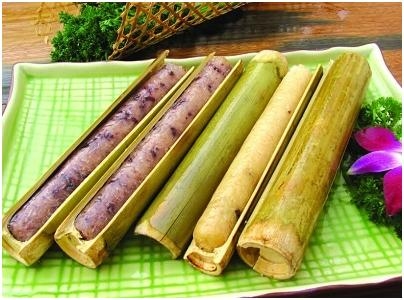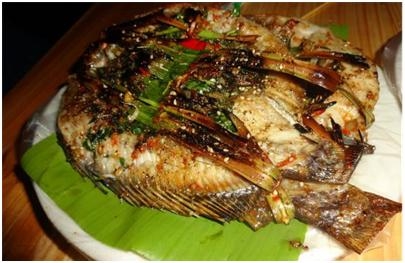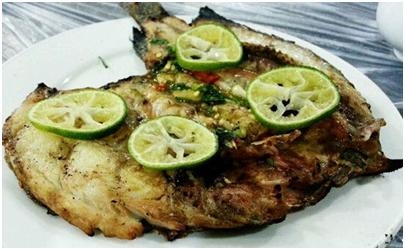代寫(xiě)代做Project 3 - CanvasList CS 251
時(shí)間:2024-03-02 來(lái)源: 作者: 我要糾錯(cuò)
Project 3 - CanvasList
CS 251, Spring 2024
In this project (and the next!) we will build our own versions of data structures. By the end of this project, you will...
● Gain an understanding of the usage of a linked list in data structures
● Have practiced manipulating a linked list in various ways
● Understand the power of polymorphism in an object-oriented language
Remember, if you get stuck for more than 30 minutes on a bug, you should come to office hours. You should also come to office hours if you have questions about the guide or starter code, even if you haven’t written any code yet.
Restrictions
● You may not include additional C++ libraries to implement CanvasList or shapes. The only included library for CanvasList is <iostream>; and the only included library for shapes is <string>.
○ It’s fine to include libraries to write tests.
● You will need to use classes, pointers, and new. Do not use malloc, we’re not writing C.
● You may modify shape.cpp, canvaslist.cpp, and canvaslist_tests.cpp freely.
● You may modify canvaslist.h only to add additional private member functions. You
may not add additional member variables (public or private), or additional public member
functions.
● See Memory Safety & valgrind.
Logistics
There are 2 main things that are different about this project:
1. zyBooks does not easily support using valgrind in its autograder. It also does not support reusing a single compilation target to run multiple tests. Therefore, although you will have a zyBooks workspace and starter code, you will submit to Gradescope to receive autograder feedback. We expect you to make multiple submissions.
2. The way many of our tests are written gives away significant parts of what you will be working on. As such, we do not have a public test suite. Instead, we’ll give detailed failure messages to the extent possible.
Due:
● Gradescope: Monday 3/4, 11:59 PM
○ canvaslist.h
○ shape.cpp
○ canvaslist.cpp
○ canvaslist_tests.cpp
● Use grace tokens:
https://docs.google.com/forms/d/e/1FAIpQLSctqCl9ZYt52IKJZGnyrrJhuW5DMN1ZCJI7d 9C_Cutm3OliqA/viewform
○ Grace tokens should be requested by 5 PM the day before. For example, if you intend to submit the project by 11:59 PM on Tuesday 3/5, you must submit the form by 5 PM on Monday 3/4. If you submit later, you will need to wait until we process it to be able to receive autograder feedback from Gradescope.
○ This requires setting up a UIC Google account. If you have not yet done so, visit https://learning.uic.edu/resources/virtual-collaboration/google-workspace/.
Testing
We will continue studying and practicing testing, this time on a data structure. This raises an interesting question: in order to test the functions that tell us what’s inside the data structure, we have to add data. But then we’re assuming that the methods to add data work correctly! We’ll have to be ok with the fact that we’re testing two functions at once. Later, we can assume that these work correctly.
This time, we’re going to take a slightly different approach to evaluating your tests. We have many buggy implementations. Your task is to write tests that expose these buggy implementations! The bugs may be in CanvasList, Shape, or in one of the derived classes. You’ll receive credit for each buggy implementation that fails your tests. This will happen when you submit to Gradescope.
Keep in mind that the correct implementation must pass your tests to receive any credit – no writing EXPECT_TRUE(false), for example. To aid you in checking your own test cases, we’ve provided solution “object files”: canvaslist_solution.o and shape_solution.o.
In zyBooks, use make run_solution_tests to run your tests on the course staff’s correct solution.
Memory “Ownership”
When we pass pointers around as arguments or return values, it’s important to track what part of the program is responsible for freeing the memory associated with that pointer. We call this concept “ownership” – whomever “owns” a pointer is responsible for freeing it.
This isn’t actually enforced by the compiler or anything – it’s an informal model that helps us keep track of when to free things. Here’s an example:
class MyClass {
public:
int* ptr;
MyClass() {
ptr = new int;
*ptr = 10; }
~MyClass() {
if (ptr != nullptr) {
delete ptr; }
}
int* getPtr() {
// Who owns this now?
return ptr; }
};
int main() {
MyClass mc;
int* p = mc.getPtr();
delete p;
}
Here, we have code that eventually ends up with 2 pointers in different places that point to the same memory. This is a problem! The delete p; in main and the destructor ~MyClass() both try to delete the same underlying memory, causing a double free error.
We need to make sure only one of them runs – but which one? This is where the concept of documenting ownership comes in handy. Here’s two examples, either of which will prevent the double free error.
// MyClass keeps ownership, caller
// must not free returned ptr
int* getPtr() {
return ptr; }
int main() {
// Ownership transferred to caller,
// caller must free returned ptr
int* getPtr() {
int *ret = ptr;
ptr = nullptr;
return ret;
}
int main() {
MyClass mc;
int* p = mc.getPtr();
}
MyClass mc;
int* p = mc.getPtr();
delete p;
}
In the example on the left, MyClass keeps ownership and will free ptr in its destructor – according to the method comment, the caller must not free the returned pointer. There’s nothing stopping the caller from doing so, though, so it’s just documentation.
In the example on the right, MyClass gives up or transfers ownership. According to the documentation, the caller must free the returned pointer. Therefore, the implementation sets ptr = nullptr; inside the class, preventing the destructor from deleting it. Outside the class, in main, the pointer is deleted. Again, there’s nothing guaranteeing the caller deletes the pointer.
If this all seems difficult to keep track of, you’re right! It’s super important though, and that’s why C++11 added a feature called “smart pointers”. These help keep track of ownership for us, and lets the language take care of when dynamically allocated memory gets free’d. Unfortunately, they’re a bit too much to cover in 251 and we won’t see them this term.
Memory Safety & valgrind
In this class, we care a lot about writing correct C++ code. One aspect of correctness that is much more relevant when working with pointers is memory safety – does our program only access memory that it is allowed to? Programs that have out-of-bounds accesses or use-after-frees or other memory issues are broken programs.
On the other hand, memory leaks aren’t as bad, but they still indicate poor “hygiene” and loose memory management. You’ll definitely have memory leaks until you complete the destructor. Even then, you may have memory leaks due to mismanagement. As such, we’ll have a flat score item for writing a program that has no memory leaks and passes at least one test.
Some of the functions you will implement will specify how to handle pointer ownership, and our tests expect these to be implemented properly. Make sure you pay attention to this, so you don’t get double frees or memory leaks!
We care so strongly about this, in fact, that a program with memory errors, such as out-of-bounds accesses or use-after-frees, will receive no credit for the corresponding test. It does not matter whether your code might be correct if we ignore the undefined behavior.
We treat these as fatal, program-ending errors, because they are.
We will run all tests using valgrind to detect and report this behavior. MacOS doesn’t have valgrind – see Memory Safety and MacOS for more information.
Memory Safety Tips and Tricks
1. Apply the above section – whose job is it to free the memory?
2. Before you follow a pointer, check whether it’s nullptr.
3. If you delete something, make sure you update any pointers to it to either be a different
valid pointer or nullptr. There might be multiple pointers to the same thing!
Memory Safety and MacOS
MacOS doesn’t have valgrind. While we can use leaks, this doesn’t catch undefined behavior and makes the program incompatible with AddressSanitizer (another way of catching undefined behavior). We have a few options, none of them do everything that valgrind can, and they get progressively sketchier. (I have an M2 Mac for personal use I’m experimenting with – I really have no idea how M1 or Intel Macs behave.)
● Run your tests in zyBooks, which has valgrind. (Strongly recommended – sorry . You can still develop and do a lot of testing locally, but ensuring memory safety is easiest to do in a true Linux environment.)
These later bullets require more knowledge with the terminal and your computer, and we don’t know whether they work. We didn’t build these into the Makefile, and you’re on your own if you want to try them.
● If you have a non-M1/M2 Mac, https://github.com/LouisBrunner/valgrind-macos seems promising, but apparently has some false positives. I haven’t tested it; I don’t have an x86 Mac.
● Run all tests twice: once when compiling with AddressSanitizer (-fsanitize=address), and once under leaks. Even then, this misses when we try to read uninitialized memory!
● Use brew install llvm, and switch to using the newly installed /opt/homebrew/opt/llvm/bin/clang++ (or maybe /usr/local/opt/llvm/bin/clang++). Then, we can compile our program with -fsanitize=address and run with the environment variable ASAN_OPTIONS=detect_leaks=1 to both detect leaks and see undefined behavior. Of course, this still doesn’t see uninitialized memory errors.
● Docker just for valgrind??? (This just sounds cursed.)
���
Tasks
Task: Shape
First, we’ll need to implement the Shape base class. See the documentation in shape.h, and write your implementation in shape.cpp.
The default constructor for Shape should set x and y to 0. Task: Testing
As described above, we’re evaluating your testing differently this project.
See canvaslist.h for documentation and a description of what each method does. We strongly recommend writing your test suite first. Place your tests in canvaslist_tests.cpp. Remember to use EXPECT_EQ (keeps going when it fails) or ASSERT_EQ (stops the test when it fails).
You can check that your tests pass on the solution in zyBooks by using the make run_solution_tests command. If your tests don’t pass on the solution, they’re probably wrong!
When you submit to Gradescope, we will run your tests on a correct solution. If the correct solution passes your tests, we will then run your tests on many broken solutions, to see how many your tests “expose”. If you are struggling with writing tests for a particular broken solution, see Project3BrokenSolutionsOverview foravaguedescriptionofwhereeachisbroken.
Task: CanvasList
CanvasList is a singly linked list, where the nodes are of type ShapeNode. You’ll see that the ShapeNode is a class that contains 2 member variables: a Shape* (data pointer), and a ShapeNode* (pointer to the next node).
A reminder of the restrictions from above:
● You may modify canvaslist.h only to add additional private member functions.
● You may not add additional member variables (public or private), or additional public
member functions.
See canvaslist.h for documentation and a description of what each method does. All your function definitions should be in canvaslist.cpp. We recommend completing the methods in the following order:
1. Default constructor
2. empty, size, front
a. Your size function should be one line long. If it is not one line long, you are
probably doing something that is setting you up for tricky bugs in the future.
3. push_front, push_back
4. draw, print_addresses
5. Copy constructor 6. find, shape_at 7. insert_after
8. pop_front, pop_back 9. clear
10. Assignment operator 11. Destructor
12. remove_at
13. remove_every_other
Task: Other Shapes
Finally, we take advantage of the fact that our CanvasList stores pointers to various shapes to use polymorphism. Implement the remaining derived classes:
● Rect
● Circle
● RightTriangle
If a member variable is not given as an argument to a derived class’s constructor, set it to 0. Then, try writing tests that insert these into your CanvasList – we don’t have to write any
additional code to make the CanvasList work with them!
The RightTriangle documentation has a typo. The as_string function should have the line, “It’s a Right Triangle at x: 1, y: 2 with base: 3 and height: 4”.
Example Execution
See the (commented) code in main.cpp. You can use this file to experiment with your own linked list methods outside of a test. When enough of the methods and the extra derived classes are properly implemented, you’d see this output. Note that the addresses will be different, but the format should be the same.
List size: 0
Front: 0
Adding Shape to the front
List size: 1
It's a Shape at x: 1, y: 3
Adding Shape to the front
List size: 2
It's a Shape at x: 4, y: 6
It's a Shape at x: 1, y: 3
Adding Shape to the back
List size: 3
It's a Shape at x: 4, y: 6
It's a Shape at x: 1, y: 3
It's a Shape at x: 4, y: 6
Adding Circle to the front
List size: 4
It's a Circle at x: 2, y: 4, radius: 3
It's a Shape at x: 4, y: 6
It's a Shape at x: 1, y: 3
It's a Shape at x: 4, y: 6
Adding Rectangle to the back
List size: 5
It's a Circle at x: 2, y: 4, radius: 3
It's a Shape at x: 4, y: 6
It's a Shape at x: 1, y: 3
It's a Shape at x: 4, y: 6
It's a Rectangle at x: 0, y: 0 with width: 0 and height: 10
Adding Right Triangle to the front
List size: 6
It's a Right Triangle at x: 1, y: 2 with base: 3 and height: 4
It's a Circle at x: 2, y: 4, radius: 3
It's a Shape at x: 4, y: 6
It's a Shape at x: 1, y: 3
It's a Shape at x: 4, y: 6
It's a Rectangle at x: 0, y: 0 with width: 0 and height: 10
Deleting last element
List size: 5
It's a Right Triangle at x: 1, y: 2 with base: 3 and height: 4
It's a Circle at x: 2, y: 4, radius: 3
It's a Shape at x: 4, y: 6
It's a Shape at x: 1, y: 3
It's a Shape at x: 4, y: 6
Inserting Shape after index 1
Original:
It's a Right Triangle at x: 1, y: 2 with base: 3 and height: 4
It's a Circle at x: 2, y: 4, radius: 3
It's a Shape at x: 4, y: 6
It's a Shape at x: 1, y: 3
It's a Shape at x: 4, y: 6
Updated Original:
It's a Right Triangle at x: 1, y: 2 with base: 3 and height: 4
It's a Circle at x: 2, y: 4, radius: 3
It's a Shape at x: 3, y: 4
It's a Shape at x: 4, y: 6
It's a Shape at x: 1, y: 3
It's a Shape at x: 4, y: 6
Addresses:
Node Address: 0x562ac60e82a0
Node Address: 0x562ac60e81d0
Node Address: 0x562ac60e8260
Node Address: 0x562ac60e8150
Node Address: 0x562ac60e80e0
Node Address: 0x562ac60e8190
Shape Address: 0x562ac60e8280
Shape Address: 0x562ac60e81b0
Shape Address: 0x562ac60e8240
Shape Address: 0x562ac60e8130
Shape Address: 0x562ac60e80c0
Shape Address: 0x562ac60e8170
Grading Breakdown
Later methods depend on previous ones working correctly. For any scoring item, your program may not have valgrind errors.
Points
Shape class
3
CanvasList testing (catching bugs in broken implementations; tests must pass for a correct solution to receive credit)
20
Default CanvasList constructor, empty, size, front
4
push_front, push_back
5
draw, print_addresses (manually graded)
2
CanvasList copy constructor
5
find, shape_at
5
insert_after
5
pop_front, pop_back
5
clear
5
CanvasList assignment operator
5
remove_at
5
remove_every_other
5
No valgrind errors or memory leaks (destructor + general hygiene); passes at least one CanvasList test.
15
Circle class
2
Rect class
2
RightTriangle class
2
Style
● 2 points: Code is styled consistently; for example, using the VSCode formatter. ○ (F1, type in “Format Document”)
● 1 point: Code is reasonably styled, but there are consistent significant stylistic issues (e.g. inconsistent indentation, line length > 120, spacing, etc.)
● 0 points: No credit (e.g. entire program is on one line)
Documentation + Commenting
● 3 points: Code is well-documented with descriptive variable names and comments, but not overly documented.
● 1.5 points: Code is partially documented, due to a lack of comments and/or poor naming; or code is overly documented with unnecessary comments.
● 0 points: Code has no documentation or appropriate names.
請(qǐng)加QQ:99515681 郵箱:99515681@qq.com WX:codehelp
標(biāo)簽:
無(wú)相關(guān)信息















